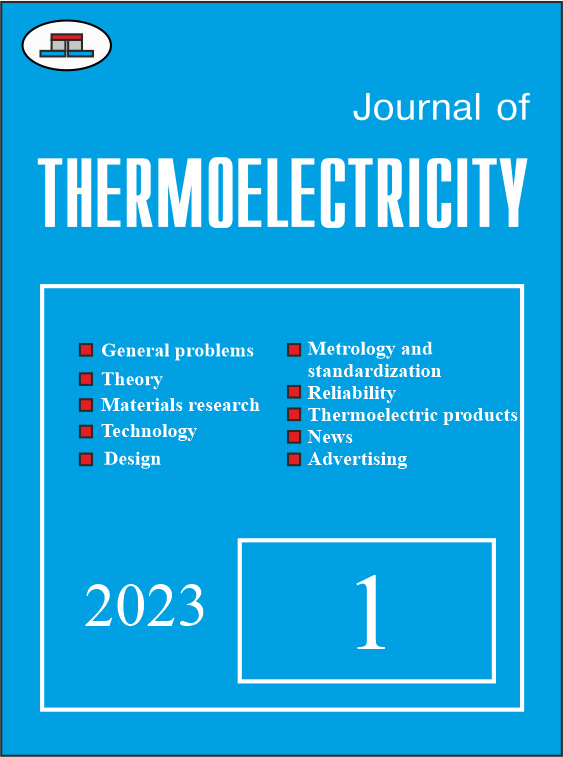Computer method of description of technologies and properties of thermoelectric Bi2-Te3 based material by extrusion method
DOI:
https://doi.org/10.63527/1607-8829-2023-1-66-74Keywords:
extrusion method, extrapolation, bismuth tellurideAbstract
This paper presents the results of a study of literature sources which describe the technology and properties of thermoelectric materials obtained by extrusion method. The result of one of the stages of creating a software product to describe the technologies for obtaining of a thermoelectric materials based on Bi-Te compounds and their properties are presented. Bibl. 7, Fig.4, Tabl.1.
References
1. Enrique Maciá “Thermoelectric Materials: Advances and Applications”, CRC Press 05/2015, ISBN 9789814463522.
2. Sabo E.P. Technology of chalcogenide thermoelements. Physical fundamentals / E.P. Sabo // Thermoelectricity. – 2006. – No. 1. – P. 45 – 66.
3. Fan X. A., Yang J. Y., Zhu W. et al (2008). Preferential orientation and thermoelectric properties of p-type Bi0.4Sb1.6Te3 system alloys by mechanical alloying and equal channel angular extrusion. Journal of Alloys and Compounds, 461, 9 – 13.
4. K. Park. Thermoelectric properties of p-type Te doped Bi0.5Sb1.5Te3 fabricated by powder extrusion / K. Park, J. H. Seo, D. C. Cho. // Materials Science and Engineering. – 2002. – P. 103 – 106.
5. J. Seo. Fabrication and thermoelectric properties of p-type Bi0.5Sb1.5Te3 compounds by ingot extrusion / J. Seo, D. Cho, K. Park. // Materials Research Bulletin. – 2000. – №35. – P. 2157 – 2163.
6. J. Seo. Effect of extrusion temperature and dopant on thermoelectric properties for hot-extruded p-type Te-doped Bi0.5Sb1.5Te3 and n-type SbI3-doped Bi2Te2.85Se0.15 / J. Seo, C. Lee, K. Park. // Materials Science and Engineering. – 1998. – P. 135 – 140.
7. Bongki Min. Texture-induced reduction in electrical resistivity of p-type (Bi, Sb)2Te3 by a hot extrusion / Bongki Min, Sang-Soon Lim, Sung-Jin Jung. // Journal of Alloys and Compounds. – 2018. – №764. – P. 261 – 266.




